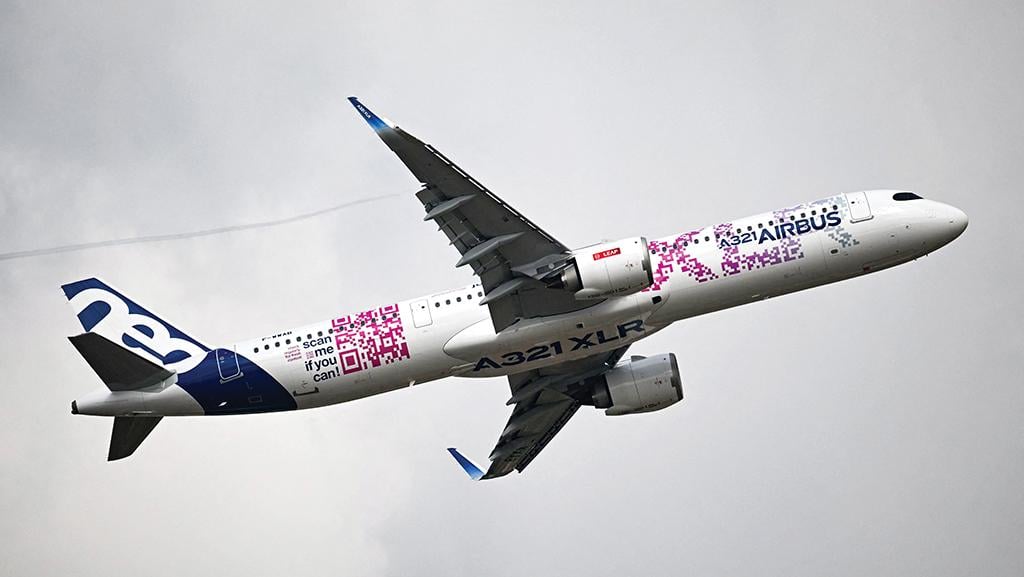
George Stephanopoulos defined spin as a hope dressed up as an observation. This year’s Paris Air Show saw an example of this with the twin-aisle market. Rolls-Royce and others assert that demand for larger aircraft is “coming back strongly.” Yet there is very little evidence of that.
Orders at Paris and the year so far actually continue a trend we have seen for over a decade: Single-aisle demand is quickly outpacing that for twin-aisles. The final Le Bourget count: 1,072 single-aisle and 142 twin-aisle orders. Before the show, Airbus and Boeing orders this year came to 287 single-aisles and 114 twin-aisles.
Thus, through Paris, there have been 1,359 single-aisle and 256 twin-aisle orders. Using estimated realized prices for all models, twin-aisles represented 31% of all order value ($32 billion out of $104 billion). So, this year’s pattern fits our trend line chart nicely. By value of backlog and deliveries, twin-aisles fell to around 30% of the market as of the end of 2022—and are continuing there this year—from 50-60% 12 years ago.
The impressive capabilities of the Airbus A320neo and Boeing 737 MAX families are clearly playing a role in this shift, as fleet planners continue to embrace smaller, more flexible, less expensive jets on as many routes as possible. The A321neo in particular is benefiting greatly. There are 3,629 of these on backlog, more than twice as large as the backlog for all Airbus and Boeing twin-aisle types put together.
While more twin-aisle orders are likely this year, it is important to take into account where they are coming from. Some background is useful. Over the past few decades, the three Gulf superconnectors—Emirates, Etihad Airways and Qatar Airways—enjoyed extremely strong growth, largely with traffic outside their base countries. In 2003-22, the three together took delivery of twin-aisles worth $79.3 billion in 2023 dollars, or 11% of the $743.4 billion twin-aisle market in this period.
This achievement is remarkable, resulting from a combination of good service and branding, home country support and geography. But they were successfully chasing other countries’ travelers. Origin and destination traffic for the United Arab Emirates and Qatar are just a percent or so of the world total, not the 11% indicated by their appetite for large jets.
Much of this superconnector traffic has come from India—around 20% by some estimates. But the big twin-aisle customer at Le Bourget was Air India, now attempting to transform itself under its new ownership, Tata. It wants its traffic back.
As for the other likely twin-aisle customers this year, Turkish Airlines simply wants to grow by being another superconnector. The new and existing Saudi carriers are aspiring superconnectors, too. Turkey and Saudi Arabia have excellent geography for connector flights—particularly if Russian airspace stays closed—and Saudi Arabia’s pockets are as deep as the other Gulf states’.
If Air India, Turkish and the Saudi carriers do not succeed with their ambitious growth plans, then the orders will not mean anything. If they do succeed, their orders will likely be at the expense of Emirates, Etihad and Qatar jetliner demand. That is what happens when more players go after the same pool of traffic. Twin-aisle demand will stay static.
Other twin-aisle indicators are not promising, either. While the traffic recovery is certainly in full force, international traffic was hit hardest and longest. AeroDynamic Advisory is forecasting a 20% impairment in 2025 relative to where demand would have been if not for the pandemic. This impairment is heavily weighted toward international long-haul demand.
Meanwhile, the single-aisle fleet is far closer to returning to normal levels of utilization, with just 9.8% of the fleet parked, compared with 16.1% of the twin-aisles.
This industry is going to have to live with a new reality: What was once a 50-50 single-twin market is now a 70-30 market, with no signs of changing. This new reality further complicates an already difficult production outlook. Suppliers that are heavily dependent on twin-aisles need to rebalance their portfolios. And single-aisle suppliers must meet the challenge of ramping up to record output levels.






Comments